There is a new book on South Africa’s Apartheid-era nuclear weapons program by Nic von Wielligh, who participated in the program. Originally published in Afrikaans as Die Bom: Suid-Afrika se Kernwapenprogram, the book is now available in English. (The title is translated literally as The Bomb: South Africa’s Nuclear Weapons Programme.) The CNS office in Vienna held a book launch.
Die Bom is filled with revelations, filling in many details about South Africa’s Apartheid-era bomb program. One revelation in particular, struck me as important.
South Africa’s bomb was much smaller than you think.
We’ve long know that South Africa’s nuclear program used highly enriched uranium in a gun-type device, similar to the Little Boy bomb that the United States used to devastate Hiroshima. The common view from the nongovernmental community has been that the South Africa’s bomb was bulky, more of a demonstration object than a deliverable weapon. This owes, in no small part, to the public representations of some South African officials who described it as the sort of thing one might “kick out of the back of a plane” pr as a “bulky gun-type device that lacked neutron initiators.” The dimensions of the device, as provided by ARMSCOR in public, were quite rotund — 1.8 m by .65 m. This large design is often matched to an image, taken by Mungo Poore, of giant bomb casings located at the Kentron Circle facility.
I don’t know what these bomb casings were for, but according to von Wielligh they were not for South Africa’s nuclear weapons. While you have to read between the lines a bit, South Africa’s nuclear bomb looked like this.
This is the Raptor I, a television-guided glide bomb. (It is also known as the H2.) When South Africa began building operational nuclear weapons, those nuclear weapons were to be delivered by aircraft armed with the Raptor and, eventually, by a medium-range ballistic missile based on Israel’s Jericho-2.
Von Wielligh doesn’t come out and say this explicitly. But he does provide the dimensions for South Africa’s test devices, narrative information about how South Africa’s nuclear weapons were to be delivered, and the full text of many formally secret official documents in an appendix to the book. It took me a little while to put two and two together, but then I realized what he was saying. Since then, I’ve confirmed that this understanding of von Wielligh’s book is correct.
At the time of South Africa’s decision to abandon its nuclear weapons program, the South African bomb was already small enough to arm both the H2 and South Africa’s ballistic missile under development. And, perhaps not so surprisingly, remnants of this program showed up on the market for export to places like Pakistan.
1.
Video/Melba
One possible source of misinformation about the size of South Africa’s nuclear weapons is the pair of demonstration objects that South Africa built. South Africa’s nuclear strategy emphasized a gradual disclosure of its nuclear capability — starting with what might be called calculated ambiguity about South Africa’s nuclear capacity, moving to covert acknowledgement of the capacity to select governments and culminating in an over deterrent posture that would involve a nuclear detonation. South Africa built a series of specially designed demonstration objects for this purpose.
There was an early gun-type device that was never fitted with enriched uranium. This was the device that would have been “cold tested” at Vastrap, the South African nuclear test site. It was eventually tested — again, in a cold test using natural uranium so that it did not go boom — at location known as Somerset West. The device itself was very large. According to von Wielligh, the gun-assembly was 2.79 m in length x 0.480 m. When placed in a much larger casing (4.44 m x 0.610 m), the package weighed 3,450 kilograms.
South Africa’s first real nuclear device was a test article initially called Video (and later Melba). This device was somewhat smaller (2 m x 0.36 m) than the cold-test device. It weighed 750 kilograms and would have had a yield of 6 kilotons. (I believe this is because the uranium was only enriched to 80 percent.) This device was stored in a mine for many years. Von Wielligh tells a funny story about moving it.
At the time of South Africa’s denuclearization, RSA was planning to build a new test object known as Modulus.
2.
Hobo/Cabot and Hamerkop
South Africa did not produce an operational weapon — which von Wielligh defines colloquially as one that was “G.I. Proof” — until Armscor took over production. Armscor built South Africa’s first operational weapon, code-named Hobo (and later Cabot) in 1982. This device also had a yield of 6 kilotons. It was eventually dissembled and the “warhead” used in a production model bomb. (A note on terminology: von Wielligh uses warhead to mean the HEU target into which an HEU “missile” would have been fired. But given the different in yield between Cabot and later HAMERKOP weapons, I find this hard to take literally. Perhaps the HEU was further enriched.)
Armscor then built a series of pre-production and production models under the code-name HAMERKOP. HAMERKOP is an awesome code name. It’s a bird — according to a 19th century anthropologist, the locals said that when aHAMERKOP appears overhead and cries, someone has died. I don’t know if the lore was reported correctly, but it makes a pretty fine code-name for a nuclear weapon. While Hobo/Cabot was “dumb bomb,” theHAMERKOP series were “smart” television-guided glide bombs.
South Africa declassified its television-guided glide bomb, the H2, in 1998. The system was marketed under the name Raptor. There are now later models (Raptor II, see the brochure below) and the technology served as the basis for South Africa’s MUPSOW cruise missile. I have a sneaking suspicion that the “H” in H2 is for HAMERKOP. (Jane’s reported it as “Hammerhead”, which is pretty close. It was also referred to as Project Hanto.) Ultimately, South Africa built five HAMERKOP devices. Based of public information released by South Africa, a nuclear weapon that could fit inside the H2 glide bomb could be no more than 1.67 m x 0.38 m. The total mass would be around 600 kg. This device had a yield of 20 kilotons.
Von Wielligh’s book contains a chart showing each of South Africa’s nuclear devices in its stockpile at the time of abandonment. It’s quite explicit. I’ve reproduced it for you in a slightly simpler form.
| Weapon | Production date (Front/Rear) |
Remarks |
|---|---|---|
| Video/Melba | November 1979 (built by the AEB) |
Replated in 1982 |
| Hobo/Cabot | December 1982 (first weapon built by Armscor) |
Warhead later built into another device (502) |
| 306 | September 1986/November 1986 | Upgraded pre-production model |
| 501 | August 1987/June 1988 | First production model |
| 502 | November 1988/October 1988 | Production Model |
| 503 | November 1988/March 1989 | Production Model |
| 504 | March 1989/March 1989 | Production Model |
3.
Husky
South Africa’s miniaturized design was small enought to fit on HUSKY — a medium range ballistic missile that was derived from Israel’s Jericho 2 missile and tested as the RSA-3 space launch vehicle. In fact, South Africa intended to design “operationally interchangeable” devices which means each nuclear explosive could be placed in either a glide bomb or a missile.
South Africa planned to fit three “Husky” missiles with nuclear weapons, before producing three more additional boosted gun-type devices that would have a larger yield.
At some point I need to revisit the history of the Jericho/Shavit/RSA rocket series in the context of what we now know about cooperation between Israel and South Africa. But this post is already too long! South Africa tested RSA-3 three times from the Overberg test range. There is a remaining airframe in the South African Air Force Museum at Swartkop, cradled in its erector-launcher.
The erector-launcher left me wondering. What sort of transporter would HUSKY have used?
The truck was called the Lorry Zonder Naam — “Lorry Without a Name”. Because, you know, it was super secret. South Africa later converted the vehicle to an ammunition resupply vehicle for the G-6 artillery system. There is a picture of the LZN in Clive Wilsworth’s 2010 history of South African artillery, First In, Last Out, showing the vehicle being demonstrated in Iraq for possible export shortly before Iraq’s invasion of Kuwait.
One can also find images of repurposed LZN vehicles online, working as a fire truck and, I think, in a junk yard, both under the name “Hulk”.
Wilsworth’s book is pretty amazing, not least because he included much of the information I painstakingly collected. He called the missile project HIBISCUS, not HUKSY — but code-name changes were common in South Africa (Video/Melba, Hobo/Cabot). And he, or a careless editor, dropped a zero from HUSKY’s range. (A medium-range ballistic missile has a range of 1,000-3,000 km.) But still, this is an impressive paragraph about South Africa’s bomb program, all the more impressive for appearing as an aside in a book on the country’s artillery systems:
This gave rise to Project Hibiscus—the development of a surface-to-surface missile with a 300-kilometre range capable of delivering either a conventional or nuclear warhead. The project integrated an Israeli missile, which was tested at the new Overberg Test Range on the Cape south coast. At the same time, the SAAF was developing a ‘smart bomb’ to be launched and guided by a Buccaneer, and it was determined that the subsequent H2 bomb was more feasible than a missile system and the whole project was subsequently terminated. Not all efforts were wasted though, as Hibiscus at least contributed to the development of a prototype heavy transporter vehicle nicknamed the MLZN (Moerse Lorrie Zonder Naam—‘huge lorry without name’). This vehicle served as a basis for a G6 ammunition vehicle as it shared a number of parts (engine, transmission, axles and wheels).
Fortunately for South Africa, this sensitive information was stored safely away from prying eyes in the most secure of all places — a printed book.
4.
Exports
One interesting thing that arises from an improved understanding of South Africa’s nuclear program is how much of the supporting technology were eventually put on the export market.
First, South Africa exported the H2/Raptor to Pakistan. (Denel, which exported the Raptor to Pakistan, is also suspected of helping Pakistan develop the Ra’ad cruise missile.) Pakistan’s nuclear weapon is a different design than South Africa’s (imposion rather than gun-type), but still. I’d be interested in knowing how South Africa verified that the end use was conventional only. Perhaps they integrated the conventional payload with the guidance system so that removing one would damage the other.
Second, South Africa also attempted to export the LZN transporter to a number of countries. The image above indicates that South Africa would have sold the LZN, configured as an ammunition loader, to Iraq. Iraq, of course, might have found other uses for it. And according to a South African publication, South Africa developed the LZN prototype for sale to an “unnamed Middle Eastern client” who ultimately declined to purchase it. The two Middle Eastern clients who purchased the G6 were the UAE and Oman. The UAE has a missile program of uncertain size that includes Scud-B andScud-C missiles purchased from North Korea in 1988 and 1999. A picture of that prototype is below. Notice the grillwork — eL Zed eN. A phonetic spelling of LZN that sounds vaguely Arabic. I wonder if the client was amused, offended or just befuddled.
I also wonder what other members of the Missile Technology Control Regime, which South Africa joined in 1995, would have thought about these exports if the roots of the Raptor and the LZN in Apartheid-era South Africa’s bomb program had been widely known.
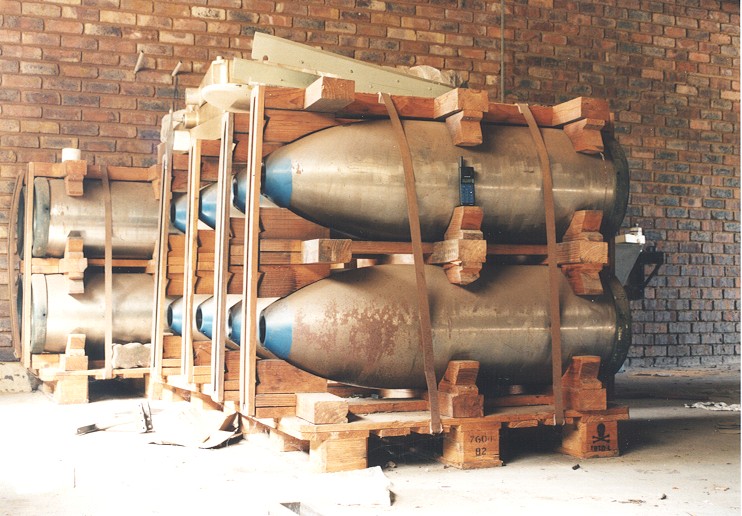
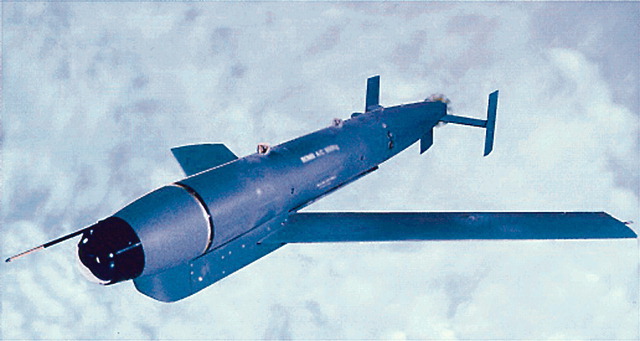
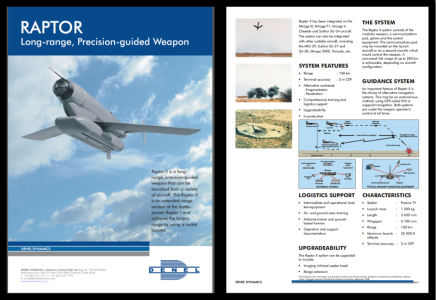
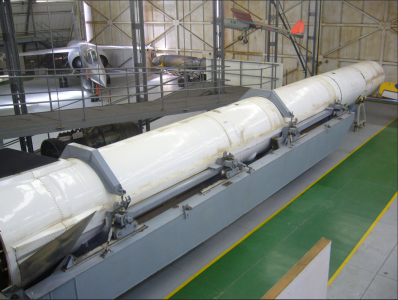
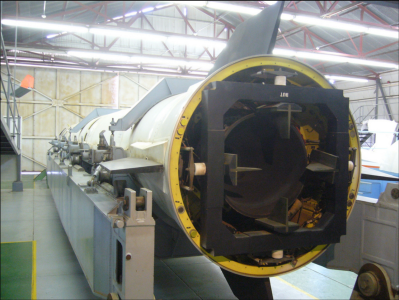
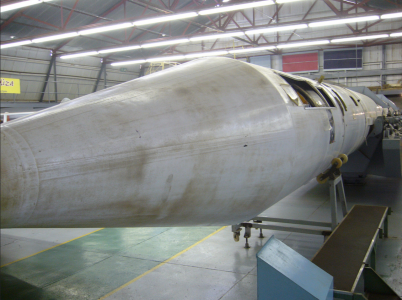
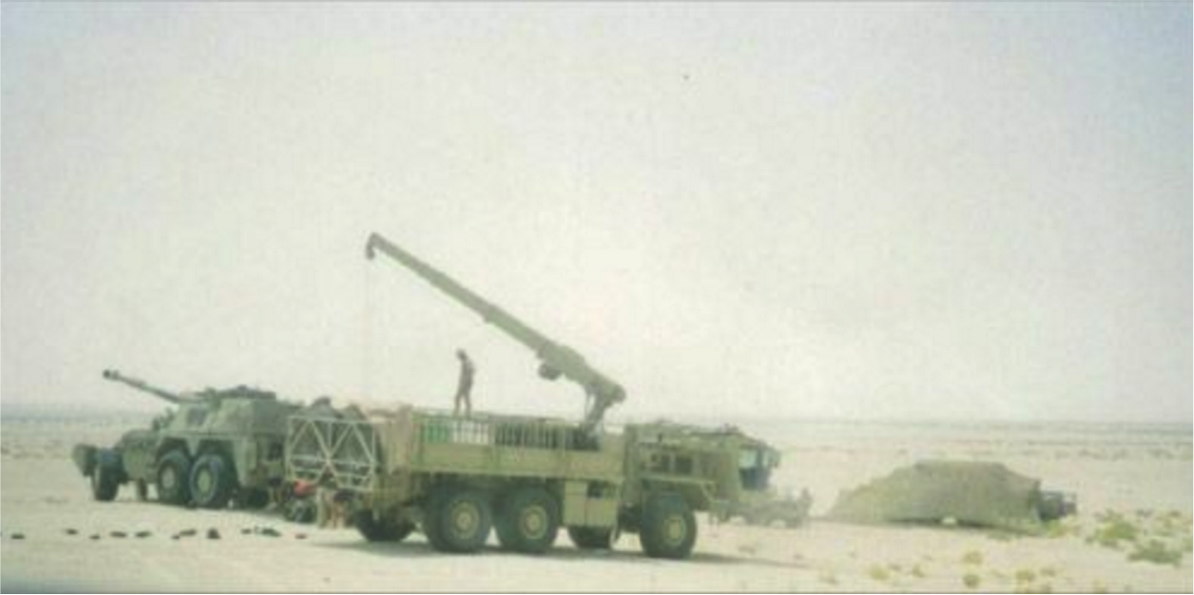
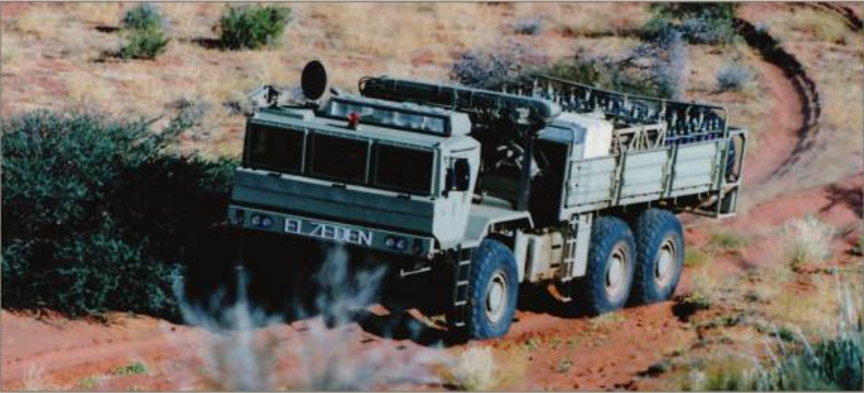

I assume that, due to you not mentioning it, there is nothing about the “Vela Incident”? The English translation does not appear to be on sale yet, at least not that I can find – when it is could you please add a link and/or post it via the twitterz?
There is rather a lot of the Vela Incident, or rather von Wielligh’s strong assertion that South Africa had nothing to do with the event and that South Africa did not record any fallout that would have indicated a test.
“Video/Melba”
You do realize that if you put “Video/Melba” together you get “Vela”? As in “Vela Incident”?
Actually, you get Velba.
Vela incident comes from the US satellite program named Vela, and the Vela Hotel model in particular, that detected the double flash event.
https://en.wikipedia.org/wiki/Vela_(satellite)
Though the SA names line up in an amusing manner, their entire program started after the Vela Program was underway and named…
I am going,” said D’Artagnan, imparting to his voice an evident tone of curiosity; for Aramis’s annoyance, well dissembled as it was, had not a whit escaped him;
the last picture – of the truck in the desert – did they REALLY write “ELZEDEN” on the truck or is that photoshop? if they did somehad somewhere had a sense of humor …
The truck is MUCH TOO SMALL. See for example “Those who had the Power” by Nicholas Paul Badenhorst and Pierre Lowe Victor for reference.
Yes, the truck was developed on the basis of the program. It’s not the exact same truck. I will totally buy that book, though. LOOKS GREAT.
In his 2001 International Security article on South Africa’s nuclear program Peter Liberman noted that the final variant of South Africa’s nuclear weapon was mounted on Armscor’s H2 glide bomb.
Well, he was right.
The mobile launcher may have used just a single Shavit stage, the 300km range becomes correct as well if this is the case. I recall talk about “stopping communist armies coming south” and a focus on tactical military use at the time. Mobile launchers were typically for short range missiles (in times past) for obvious reasons.
Fascinating! Isn’t “Hammerhead” just a literal translation of “Hammerkop”?
If SA had used their bombs they would have dropped them on the Cuban/Angolan troop concentrations preparing to invade the Ovamboland during mid to late 1988. If the conventional Cuban/Fapla forces had crossed the “cutline” border in the western part of Ovamboland during this time the SADF would not have been able to stop them conventionally. SADF/SAAF had lost air dominance by this time. (The Cubans would have crosses the border in the vicinity of beacon 10 advanced south and would then have swung east to attack Oshakati/Ondangwa. The SA government could not let this happen)
Nothing about South Africa’s nuclear connection with Iran? Representatives from Tehran arrived in South Africa shortly after the venerable Nelson Mandela’s ANC took over the government and attempted to acquire what were termed at the time “atom bomb blue prints”. That and a subsequent meeting at Pelindaba between Reza Amrollahi, leader of the Iranian delegation and Waldo Stumpf who headed the nuclear facility at the time, is well documented in my book “Iran’s Nuclear Option” (Casemate,2005). Indeed, details were not only originally released by Mungo Soggot a journalist with the authoritative Mail and Guardian (Johannesburg) but he also disclosed the fact that Pik Botha, then an ANC cabinet minister was present at the Pelindaba get together. The entire meeting (and subsequent events) is detailed in Chapter 7 headed “Nuclear Link-Up: South Africa and Iran”, also subsequently featured in my report carried by Jane’s “International Defence Review”.
Interestingly Stumpf, obviously fearing for his pension, initially denied that the Iranian meeting in his office had ever taken place. I publically challenged him but he declined to comment, admitting only years later that he had in fact met with the Iranian delegation. Stumpf was sidelined by the ANC shortly afterwards and there is some evidence that Pretoria did eventually play ball with Iran, but to what extent nobody is prepared to comment.
Question: was the H2 glide bomb (used in a fire and forget , smart bomb mode) not used in the “Angolan border war” to destroy a bridge over the Cuito river on the 3rd of January 1988?.This info is available in Fred Bridgland’s book ” The war for Africa”. Interesting reading is also Al J Venter’s book “How South Africa built six atomic bombs”